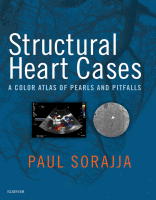Physical Address
304 North Cardinal St.
Dorchester Center, MA 02124

Types of Echocardiographic Studies Cardiac ultrasound examinations now are performed in various practice settings by health care providers with differing types of clinical and imaging expertise. Diagnostic echocardiography is defined as an echocardiographic examination performed under the supervision of a cardiologist with expertise in echocardiography (Level 2 or 3 training) for the purposes of diagnosis, measurement of disease severity, evaluation of disease progression, or assessment of…

All echocardiographic imaging depends on digital image processing. Ultrasound systems start with raw information (pixels) that are then used for two-dimensional (2D) or three-dimensional (3D) images using intensity, textures, and gradients to highlight edges and structures, thereby creating anatomic-type images of cardiac structures ( Fig. 4.1 ). Automated image analysis is central to display and analysis of 3D images, calculation of 3D LV volumes with semiautomated…

Transesophageal echocardiography (TEE) offers the advantage of improved image quality compared with transthoracic echocardiographic images, particularly of posterior structures, such as the interatrial septum, mitral valve, left atrium (LA), and pulmonary veins. Image quality is improved both because of the decreased distance between the transducer and the structures of interest and because of the absence of intervening lung or bone tissue. A better signal-to-noise ratio and…

Basic Imaging Principles Tomographic Imaging Echocardiography provides tomographic images of cardiac structures and blood flow, analogous to a thin “slice” through the heart. Two-dimensional (2D) echocardiographic images provide detailed anatomic data in a given image plane, but complete evaluation of the cardiac chambers and valves requires integration of information from multiple image planes. Small structures that traverse numerous tomographic planes (e.g., the coronary arteries) are difficult…

An understanding of the basic principles of ultrasound imaging and Doppler echocardiography is essential both during data acquisition and for correct interpretation of the ultrasound information. Although, at times, current instruments provide instantaneous images so clear and detailed that it seems as if we can “see” the heart and blood flow directly, in actuality we always are looking at images and flow data generated by complex…

You’re Reading a Preview Become a Clinical Tree membership for Full access and enjoy Unlimited articles Become membership If you are a member. Log in here

You’re Reading a Preview Become a Clinical Tree membership for Full access and enjoy Unlimited articles Become membership If you are a member. Log in here

You’re Reading a Preview Become a Clinical Tree membership for Full access and enjoy Unlimited articles Become membership If you are a member. Log in here

You’re Reading a Preview Become a Clinical Tree membership for Full access and enjoy Unlimited articles Become membership If you are a member. Log in here

You’re Reading a Preview Become a Clinical Tree membership for Full access and enjoy Unlimited articles Become membership If you are a member. Log in here

You’re Reading a Preview Become a Clinical Tree membership for Full access and enjoy Unlimited articles Become membership If you are a member. Log in here

You’re Reading a Preview Become a Clinical Tree membership for Full access and enjoy Unlimited articles Become membership If you are a member. Log in here

You’re Reading a Preview Become a Clinical Tree membership for Full access and enjoy Unlimited articles Become membership If you are a member. Log in here

You’re Reading a Preview Become a Clinical Tree membership for Full access and enjoy Unlimited articles Become membership If you are a member. Log in here

You’re Reading a Preview Become a Clinical Tree membership for Full access and enjoy Unlimited articles Become membership If you are a member. Log in here

You’re Reading a Preview Become a Clinical Tree membership for Full access and enjoy Unlimited articles Become membership If you are a member. Log in here

You’re Reading a Preview Become a Clinical Tree membership for Full access and enjoy Unlimited articles Become membership If you are a member. Log in here

You’re Reading a Preview Become a Clinical Tree membership for Full access and enjoy Unlimited articles Become membership If you are a member. Log in here

You’re Reading a Preview Become a Clinical Tree membership for Full access and enjoy Unlimited articles Become membership If you are a member. Log in here

You’re Reading a Preview Become a Clinical Tree membership for Full access and enjoy Unlimited articles Become membership If you are a member. Log in here